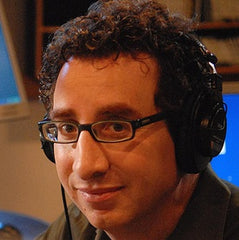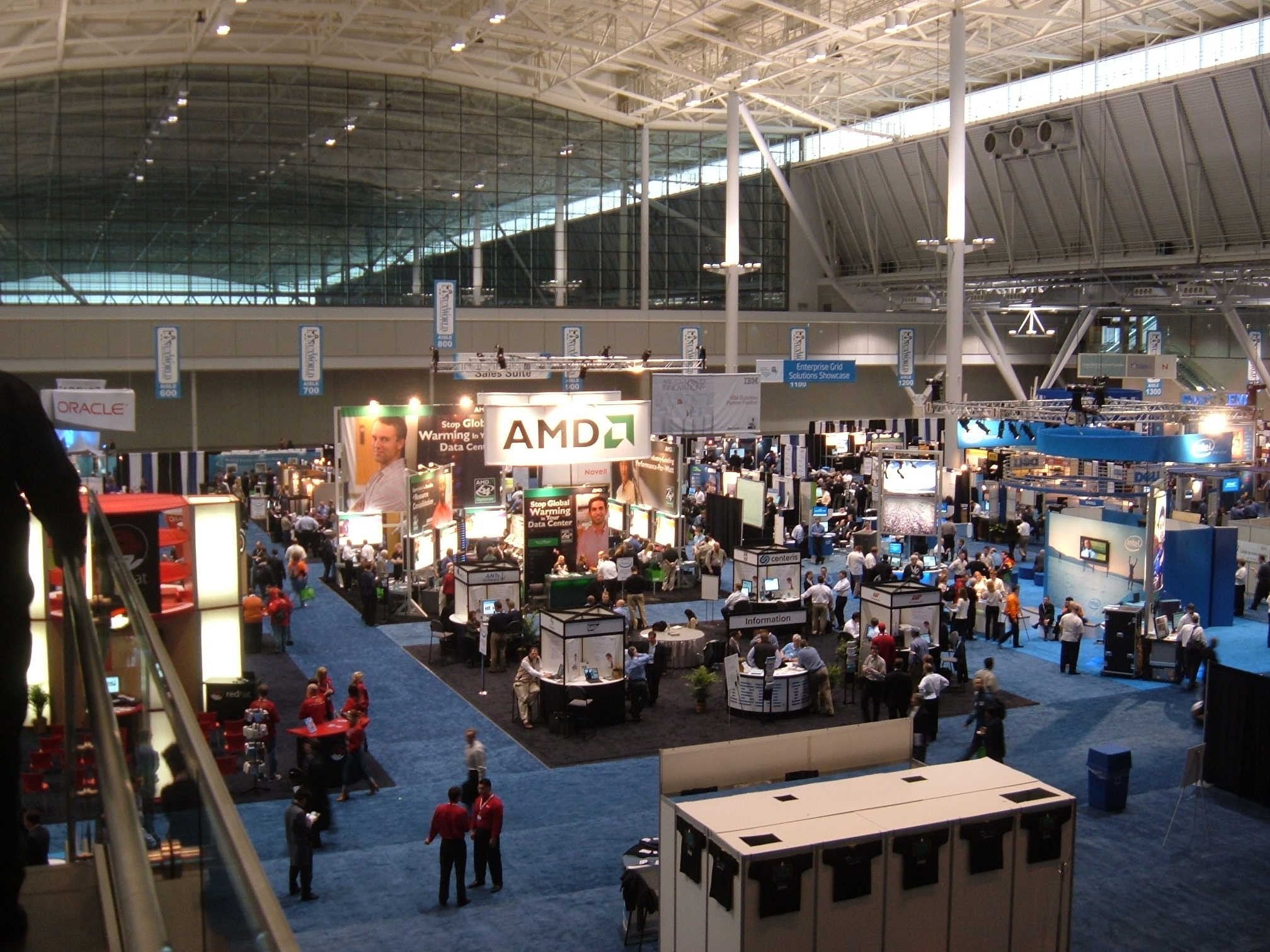
Trade shows can be an effective component of any sales and marketing plan. However, exhibiting at a trade show can cost your company a lot of money, resources and time. Effective planning and strategic execution is needed to increase your return on investment (ROI). So the challenge here is for exhibitors to maximize sales while keeping costs as low as possible. Let's face it; if you're not getting a positive return then you're wasting your time and money. To help retailers get the most out of any show, we asked a number of trade show experts to share their best trade show tips on how to increase return of investment. Here’s what they had to say:
Stop ignoring the audience; engage with attendees
 First, is to stop ignoring the audience. Simple behaviors that are normal at the office, such as looking and talking on your phone, working on your computer, eating, or talking to your coworkers are abhorrent on the trade show floor. When you stare at your phone or get in a huddle and chat with your coworkers you're signaling to everyone else passing by that you have zero interest in connecting with them. People aren't inherently mean, they're just not comfortable talking to complete strangers so they resort to these comfortable behaviors that unfortunately project disinterest.
First, is to stop ignoring the audience. Simple behaviors that are normal at the office, such as looking and talking on your phone, working on your computer, eating, or talking to your coworkers are abhorrent on the trade show floor. When you stare at your phone or get in a huddle and chat with your coworkers you're signaling to everyone else passing by that you have zero interest in connecting with them. People aren't inherently mean, they're just not comfortable talking to complete strangers so they resort to these comfortable behaviors that unfortunately project disinterest.
To combat this, my second tip is to prepare some opening lines and qualifying questions to engage and determine whether this person would be an ideal customer. I'm amazed how the overwhelming majority of people who spend a fortune to go to trade shows, don't spend the extra time that's necessary to determine how to engage with attendees.
David Spark is the founder of Spark Media Solutions and the author of "Three Feet from Seven Figures: One-on-One Engagement Techniques to Qualify More Leads at Trade Shows" available at ThreeFeetBook.com. Follow him on Twitter: @dspark
Seek your targets and bring them to the booth
 Be prepared. Know who you want to target at the show. Don’t wait for them to come to you, but instead seek them out for a meeting and bring them back to the booth!
Be prepared. Know who you want to target at the show. Don’t wait for them to come to you, but instead seek them out for a meeting and bring them back to the booth!
Barry Moltz is the owner of Getting Small Business Unstuck. Author of 5 books, and Radio Talk Host AM560. Follow him on Twitter: @barrymoltz
Come equipped with a simple, non-threatening agreement
 When I was heading up sales and marketing for GoToMeeting, we always went to trade shows with one page, "Trade Show Floor Agreements." They were essentially LOI's to do a trial, but we never used the words "pilot" or "trial" as the connotated that a future decision was still to be made.
When I was heading up sales and marketing for GoToMeeting, we always went to trade shows with one page, "Trade Show Floor Agreements." They were essentially LOI's to do a trial, but we never used the words "pilot" or "trial" as the connotated that a future decision was still to be made.
These non-binding agreements specified special pricing that we only offer at trade shows. Once the initial 30-day period of these agreements had expired, the customer automatically rolled into our standard agreement. Yes, they could have balked at this, as the LOI wasn't legally binding. However, of the hundred or so of these agreements that we signed over the years, I never recall someone not moving into a definitive contract. I am sure it happened, but if so, it was infrequent.
Thus, the best way to ensure you earn a positive ROI at a trade show is to come equipped with a simple, non-threatening agreement that people are comfortable signing, without getting their lawyers involved.
John Greathouse is a partner at Rincon Venture Partners, a venture capital firm investing in early stage web-based businesses and also a Co-Founder of RevUpNet, a performance-based online marketing agency. Follow him on Twitter: @johngreathouse
Have a CRM (Customer Relationship Database)
 To increase ROI every exhibitor must have a CRM (Customer Relationship Database) so that leads from the show can be imported and an automatic process assigned for making sure that the right people are following up and the leads don't fall through the cracks.
To increase ROI every exhibitor must have a CRM (Customer Relationship Database) so that leads from the show can be imported and an automatic process assigned for making sure that the right people are following up and the leads don't fall through the cracks.
Gene Marks is the President of The Marks Group PC. He writes daily for The Washington Post and weekly for Fox Business, Forbes, Fortune, Inc. Magazine, The Huffington Post and Entrepreneur Magazine. Follow him on Twitter: @genemarks
Measure and track KPIs properly
 38% of attendees say that attending an event influences their purchasing intent and 64% of attendees are new business opportunities (via Exhibit Surveys). These numbers mean that trade shows represent a big opportunity when it comes to bringing in new leads. In order to optimize your trade show for maximum ROI, you must focus on three things:
38% of attendees say that attending an event influences their purchasing intent and 64% of attendees are new business opportunities (via Exhibit Surveys). These numbers mean that trade shows represent a big opportunity when it comes to bringing in new leads. In order to optimize your trade show for maximum ROI, you must focus on three things:
1. Aligning the trade show strategy with the company's
2. Selecting the right show and budget based on strategy
3. Measuring KPI's properly
"Measurement" is where many marketers fall short. With trade shows, unlike other forms of marketing, measurement can be a lot harder due to the amount and type of variables you're dealing with. However, proper measurement is the only way to prove that there was any ROI in the first place. I recommend bringing in a third party market research firm familiar with the exhibition industry to make sure that you're tracking the right KPI's. Proper measurement also allows you to understand where you fell short so that you can optimize your exhibit for future trade shows.
Dan Scalco is the founder and director of growth at Digitalux, a digital marketing agency located in Hoboken, New Jersey. Throughout his career, he has helped hundreds of businesses save time, increase leads, and maximize sales. Follow him on Twitter: @DanScalco
Use back-end, nurture marketing
 Back-end, nurture marketing is essential after you’ve acquired a lead. Nurture marketing is more than just making phone calls. It’s using an automated program that deploys emails and will enable you to systematically send follow-up letters or postcards. Social media can also be part of an automated nurture marketing system, too. It takes multiple steps, and sometimes months, to convert a lead you paid a lot of money to acquire at a trade show. There are several marketing automation programs out there, but many don’t include a component for you to easily send direct mail.
Back-end, nurture marketing is essential after you’ve acquired a lead. Nurture marketing is more than just making phone calls. It’s using an automated program that deploys emails and will enable you to systematically send follow-up letters or postcards. Social media can also be part of an automated nurture marketing system, too. It takes multiple steps, and sometimes months, to convert a lead you paid a lot of money to acquire at a trade show. There are several marketing automation programs out there, but many don’t include a component for you to easily send direct mail.
Gary Hennerberg is considered among America’s leading marketing consultants. He has been a marketing professional since 1978 and an independent marketing consultant and copywriter since 1992. He is the author of Crack the Customer Mind Code. Follow him on Twitter: @GaryHennerberg
Attend networking and social events planned
 One of the best ways for exhibitors to increase the ROI from trade shows is to attend the networking and social events planned. Come with business cards and a short "elevator pitch" of what you do. Then make connections. Yes, you'll have your exhibitor booth, but effective networking and business relationships in today's world rely on that human connection. Approach people you saw during the day at social events later in order to make the most of that connection.
One of the best ways for exhibitors to increase the ROI from trade shows is to attend the networking and social events planned. Come with business cards and a short "elevator pitch" of what you do. Then make connections. Yes, you'll have your exhibitor booth, but effective networking and business relationships in today's world rely on that human connection. Approach people you saw during the day at social events later in order to make the most of that connection.
Miranda Marquit is a prolific writer about small business and entrepreneurship. Her most recent project is Adulting.tv, a podcast and website that helps millennials learn how to navigate business, career, and the world as grownups. Follow her on Twitter: @MMarquit
Reach out, make a little noise (both actually and figuratively) and create an engaging experience
 For many new exhibitors, especially small startups, trade shows represent a huge opportunity for face-to-face contact with people who have a high probability of being interested in the products and services being offered. But trade shows can also represent a huge percentage of a small company’s marketing budget. If a show doesn’t generate suitable ROI, it’s often a case of ‘one and done’.
For many new exhibitors, especially small startups, trade shows represent a huge opportunity for face-to-face contact with people who have a high probability of being interested in the products and services being offered. But trade shows can also represent a huge percentage of a small company’s marketing budget. If a show doesn’t generate suitable ROI, it’s often a case of ‘one and done’.
This means that savvy exhibitors need to do everything possible to make the most of their resources, especially while the exhibit floor is open.
Unfortunately, many exhibitors seem to forget why they are at the show to begin with and end up wasting the opportunity to engage with a constant stream of qualified prospects. I have personally walked by so many exhibits, generally those not surrounded by groups of engaged people, where booth personnel were practically hiding in corners severely focused on their phones or chatting with one another.
When you factor in the cost of the trade show space, the cost of the exhibit, collateral, the cost of the personnel, including travel and lodging, how much does the show end up costing for every minute that the exhibit floor is open?
If you're working a show, unless you’re putting out an actual business fire or closing a deal, your phone should remain in your pocket. You and your co-workers should be busy trying to engage every passerby in some sort of meaningful exchange so that you can share with them the benefits and value you bring to the table. You should be doing everything possible to qualify people by asking them questions about their needs so that you can focus on separating prospects from tire-kicker looking for free swag. You should be doing everything you can to communicate what you do for living and how you help your customers.
At the end of the day no marketer, especially one who has just spent a ton of money on a show, wants to remain a best kept secret. Reach out, make a little noise (both actually and figuratively) and create an engaging experience that is memorable and generates a ton of leads.
Rob ‘Spider’ Graham is currently the Founder & CEO of Trainingcraft, LLC, a company providing digital advertising, marketing and sales consulting and training solutions to publishers and advertisers. His team offers digital media sales training for publisher sales teams. Follow him on Twitter: @spidergraham
Ensure that your post-show follow-up process is sound
 My 5 tips:
My 5 tips:
-
Exhibit only at shows where 80% of the people walking by your booth are real prospects—either buyers or influencers.
-
State your show objectives clearly, and in writing. Make them very specific, for example, to generate 300 qualified leads resulting in average order sizes of $250,000.
-
Set as many appointments in advance as you can, so your limited time at the show is well used.
-
Invest in a few hours of training for your booth staff.
-
Ensure that your post-show follow-up process is sound. If not, don’t bother going to the show in the first place.
Ruth P. Stevens, author of Trade Show and Event Marketing. Her expertise in customer acquisition and retention derives from a decade and a half of hands-on marketing for both large enterprises and start-up companies. Follow her on Twitter: @RuthPStevens
Bring some memorability and excitement through gamification
 Deep down, conference attendees are tired of the same old drill. Bring some memorability and excitement to their event participation by gamifying the user experience. I once won an iPad for getting the most Twitter retweets and favorites from a hashtag competition. Another time I won a t-shirt by shooting baskets on a tablet video game. Gamify the experience and they will come.
Deep down, conference attendees are tired of the same old drill. Bring some memorability and excitement to their event participation by gamifying the user experience. I once won an iPad for getting the most Twitter retweets and favorites from a hashtag competition. Another time I won a t-shirt by shooting baskets on a tablet video game. Gamify the experience and they will come.
Andre F. Bourque is Editor Emeritus of Technorati. He's a top-ranked social media marketing and inbound marketing specialist, an adviser to Social Media Today, and maintains his own blog, Social Marketing Fella, focused on emerging social media industry technologies and trends. He serves as a copywriter and content marketing strategy consultant for several firms and brands, technologies and events in the San Francisco Bay Area. Follow him on Twitter: @SocialMktgFella



